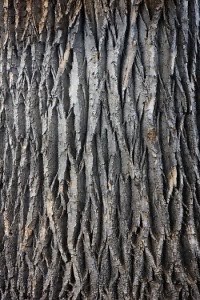Balm of Gilead
- kanjinaturals
- Feb 18, 2020
- 3 min read
Spring is coming and time to think about harvesting tree buds. Always a tricky time to figure out and catch for me, especially if some of these trees you have to go foraging for. The one I am focusing on this spring is the Cottonwood or Poplar buds to make Balm of Gilead cream. These buds have a long history of medicinal use. Problem is recognizing a cottonwood tree in the winter with no leaves or flowers. Identification can be done by looking at the bark or by studying fallen leaves that are surrounding the base of the tree. Take a look at the website www.uwsp.edu to get a good pictorial guide on what the branches and buds look like.
All cottonwood species have some characteristics that they share in common, which can be used to separate cottonwoods from other trees: They are tall; mature cottonwood trees can grow very high reaching up to 100 feet in height. Crown: The lowest branches of a mature cottonwood tree may be too high to reach, making it difficult to climb. In wide open spaces, the crown can be as wide as the height of the tree. Location with Water: Cottonwoods love to grow in areas where the moisture content is relatively high. These include the banks of rivers, streams, ponds swamps, etc. Branches: The branches spreading out from the trunk of a cottonwood tree are usually very thick and long. If the branches appear to be thin or short, the tree is probably not a cottonwood. The wood of a cottonwood tree is usually weak, and branches break routinely due to this.
The dormant floral buds are picked when they are sticky and resinous but before they plump up to open. Poplar buds are best used fresh, live for medicine. If not fresh, then frozen and thawed; do not dry buds as they tend to rot before dried.
The buds can be harvested from intact live trees, from just felled trees, and from windfall branches blown down during major windstorms. Harvest both the terminal buds of fruiting spurs and the lateral buds originally formed as axillary buds; when the entire tip of a fruiting spur is covered with a thick resin coating just carefully snap off the entire resin-coated twig and include it. Carefully check the butts of every bud and stem to make sure they are green and white, with no black or brown lines; such dark lines always indicate that fungal rot has already begun within the bud.
If the buds are picked too quickly, pre-harvest rotters are likely to be unnoticed and unfortunately included with the harvest. These often swollen, brighter green buds are very plump and big, but have characteristic partially-opened outer scales, indicating damage by trauma or fungal rot within. These rotters will contaminate the other buds and increase the likelihood of further buds rotting as well as the macerating buds once in oil.
So before we discuss how to prepare Balm of Gilead and recipes, let's talk about why this is such a powerful balm and why it is so popular. When I first heard the Poplar bud salve referred to Balm of Gilead, I thought of the church hymn and the Bible verses about the Balm of Gilead (Jeremiah) (“There is a Balm in Gilead, to heal the sin sick soul”) (“Is there no balm in Gilead; is there no physician there? why then is not the health of the daughter of my people recovered?”). Well, it is not the same balm (salve) as the one mentioned in the Bible refers to a Balm made from a tree found only in Gilead that was purported to have amazing healing powers. This is similar to the healing powers of the Cottonwood buds, just from a different tree.
Healing for skin - Versatile from dry irritated skin from winter cold, acne, scrapes, bruises, bumps; replenishes scarred, stretched, and wrinkled skin. Great for sore nipples of nursing mom, and a tattoo healer.
Tincture: chest colds and congestion, to make secretions to soothe dry cough and soften expectorant secretions when hard and impacted in bronchioles. Used for sore throats, headaches, sore muscles and joints.
Contain salicylates for pain - make liniment with vinegar tincture on chest or a oil on chest and around nose. A “topical aspirin”
A burn oil/salve for hemorrhoids: lessens pain, keeps surfaces clean and antiseptic, and stimulates nerve regeneration.
Salve and Tincture applied externally for sprains, hyperextensions, and arthritic joints.
Poplar bud tea is not very delicious to drink but can help with pain and relief of gout symptoms.
Check back to the blog next week for recipes and methods to preserve the poplar buds.














The best line is:”Carefully check the butts...to make sure they are green and white, with no black or brown lines...”! 🤪😂🤣 Sorry, I couldn’t help myself.